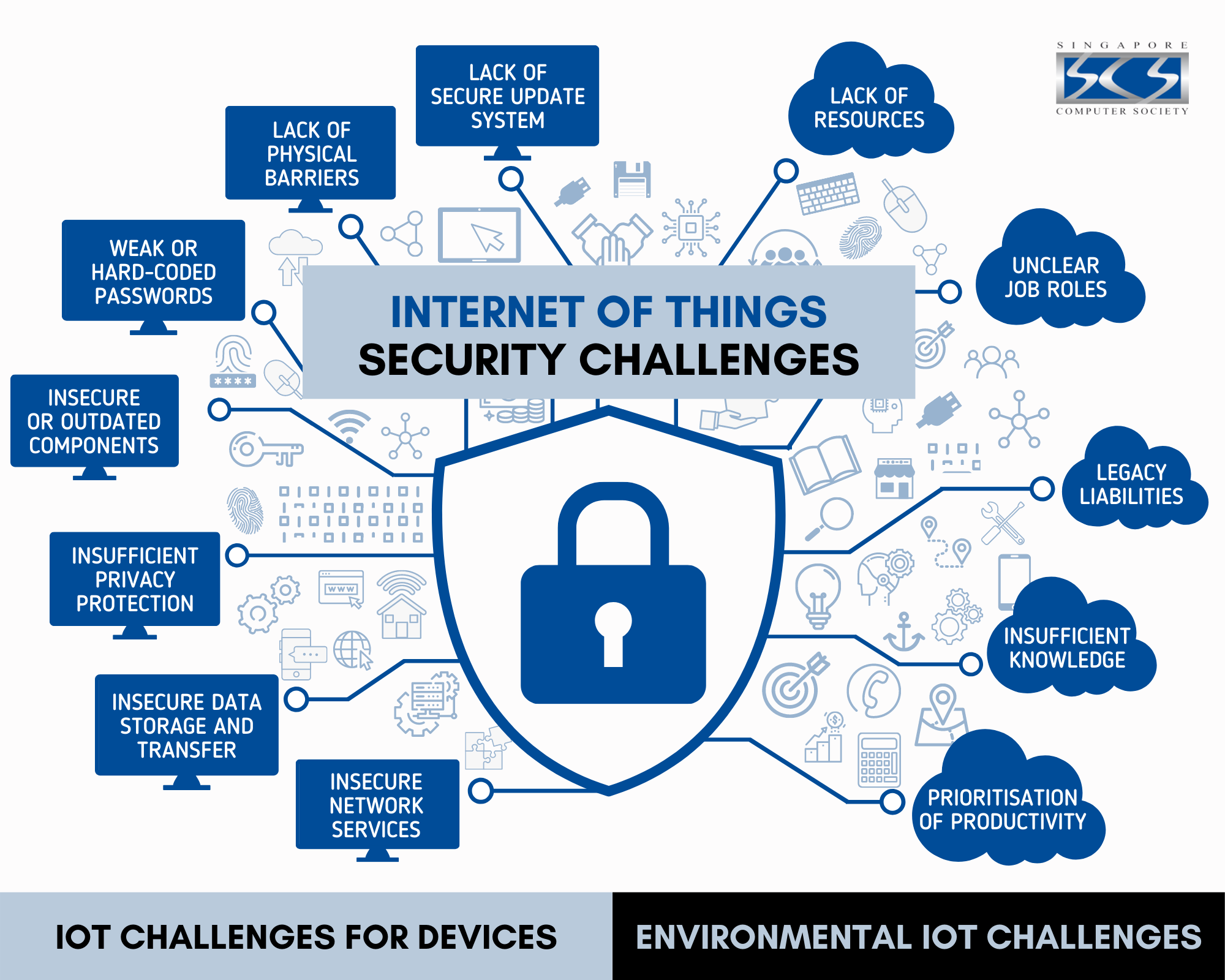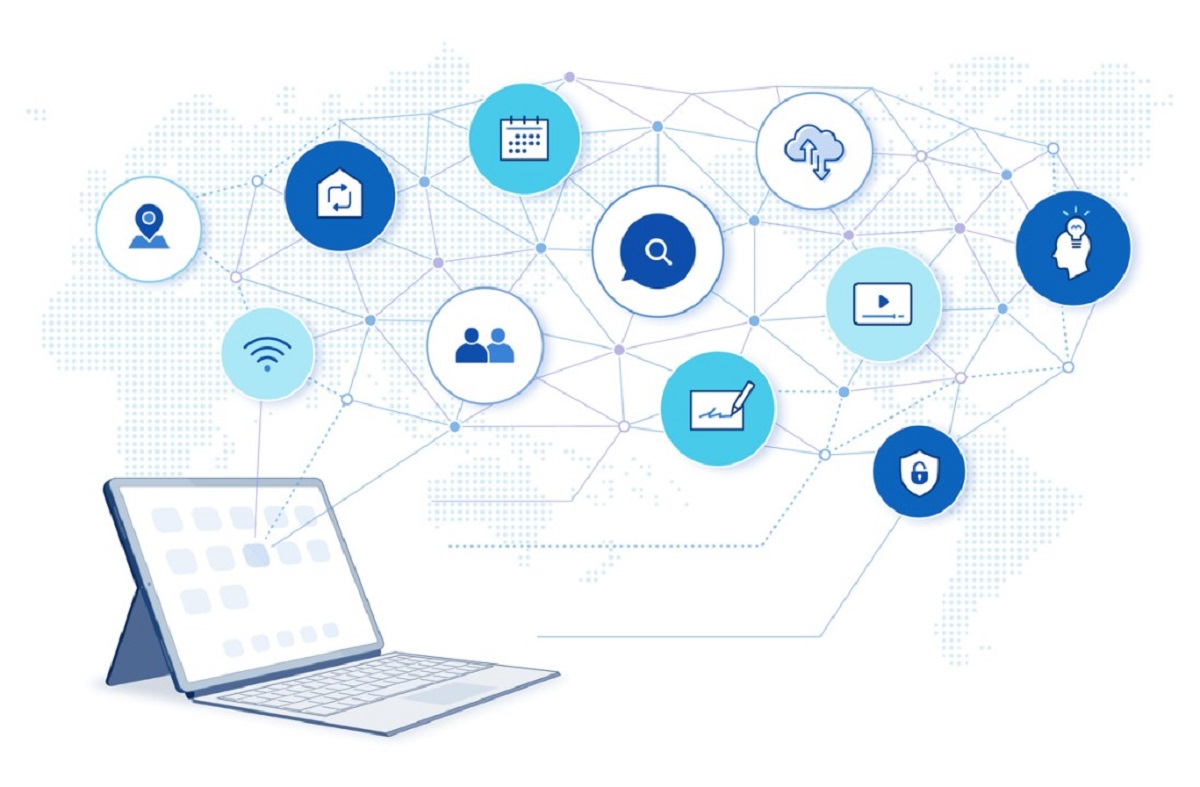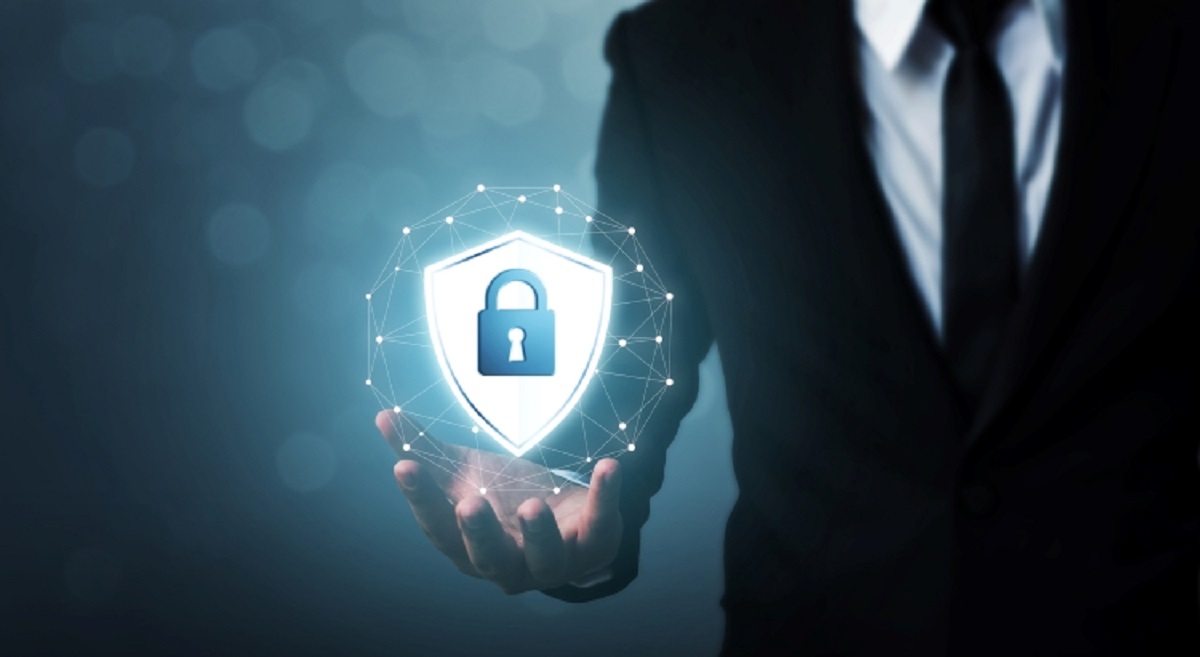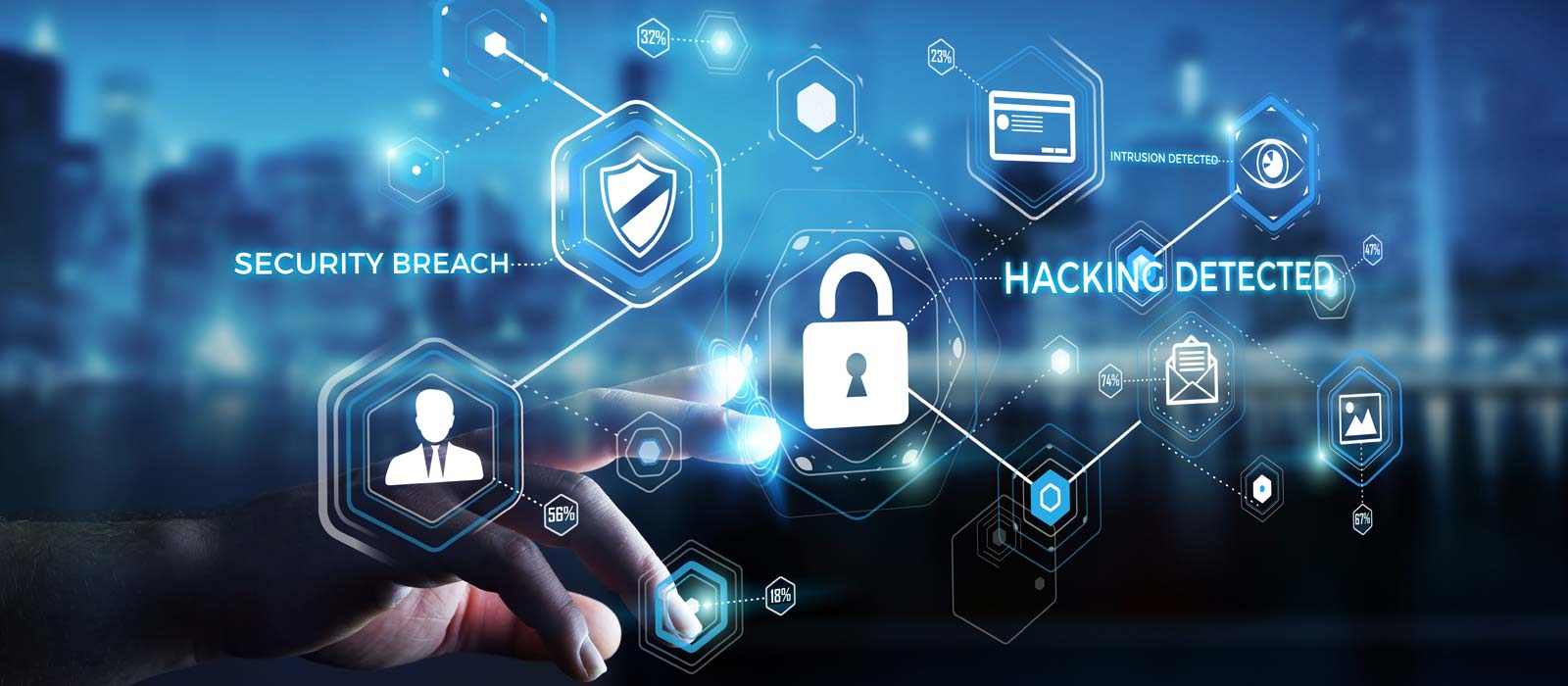Introduction
The rapid advancement of technology has brought about the emergence of the Internet of Things (IoT), which refers to the interconnected network of devices and objects that can communicate and share data with each other. This connectivity has revolutionized various industries, offering convenience, efficiency, and improved functionality on a large scale. However, with the rise of IoT comes the crucial issue of cybersecurity.
Cybersecurity is the practice of protecting digital systems, networks, and data from unauthorized access, attacks, and damage. As the IoT ecosystem continues to expand, the need to secure it becomes increasingly vital. The interconnected nature of IoT devices introduces new vulnerabilities and risks that must be addressed to safeguard both individuals and organizations.
This article will explore the relationship between cybersecurity and the Internet of Things, highlighting the challenges and solutions associated with protecting IoT devices from cyber threats. We will also discuss the current regulations and standards in place to ensure cybersecurity in IoT and provide a glimpse into the future of this dynamic field.
Now, let us delve deeper into the world of IoT and examine how the issue of cybersecurity is intricately tied to its development and widespread adoption.
What is the Internet of Things (IoT)?
The Internet of Things (IoT) refers to a vast network of interconnected devices that are embedded with sensors, software, and other technologies, enabling them to collect, exchange, and analyze data. These devices can range from everyday objects such as thermostats, refrigerators, and wearables, to more complex systems like industrial machinery and smart cities infrastructure.
The fundamental idea behind IoT is to enable these devices to communicate with each other and with humans, creating a seamless and intelligent network. This allows for increased automation, data-driven decision-making, and efficiency in various aspects of our lives. For instance, IoT can enable a home automation system to adjust the temperature and lighting based on occupancy patterns, or a smart grid system to optimize energy consumption and reduce waste.
One essential characteristic of IoT is its ability to generate massive amounts of data through sensors embedded in devices. This data can provide valuable insights and drive innovation across industries such as healthcare, transportation, manufacturing, and agriculture. By analyzing this data, businesses can gain a better understanding of customer behavior, optimize operations, and develop new products and services that cater to specific needs.
The growth of IoT is transforming the way we interact with the world around us. With the increasing number of connected devices, the possibilities for improving efficiency, convenience, and quality of life are virtually limitless.
What is Cybersecurity?
Cybersecurity is the practice of protecting digital systems, networks, and data from unauthorized access, attacks, and damage. It involves implementing measures and protocols to safeguard information and ensure the confidentiality, integrity, and availability of digital assets.
In today’s interconnected world, where information is constantly being transmitted and stored online, cybersecurity is crucial to protect individuals, businesses, and governments from cyber threats. These threats can range from common types of attacks, such as malware and phishing, to more advanced and targeted attacks like ransomware and zero-day exploits.
The main objectives of cybersecurity include:
- Confidentiality: Ensuring that only authorized individuals have access to sensitive information.
- Integrity: Preventing unauthorized modification or tampering of data or systems.
- Availability: Ensuring that systems and data are accessible and usable when needed.
Cybersecurity encompasses a wide range of practices and technologies. These include network security, endpoint security, data encryption, access controls, firewalls, intrusion detection and prevention systems, and incident response plans. It also involves educating users about best practices for safe online behavior, such as creating strong passwords, updating software regularly, and being cautious of suspicious emails or links.
As technology evolves, so do the cybersecurity challenges. Cybercriminals are constantly developing new tactics and techniques to breach defenses and exploit vulnerabilities. This necessitates a proactive and adaptive approach to cybersecurity, where organizations and individuals regularly update their security measures and stay informed about emerging threats.
Overall, cybersecurity plays a critical role in protecting our digital infrastructure and ensuring the privacy and security of sensitive information. It is an ongoing effort that requires collaboration, vigilance, and continuous learning to stay ahead of evolving cyber threats.
The Growing Importance of IoT
The Internet of Things (IoT) has become increasingly important in our modern world, transforming various industries and revolutionizing the way we live and work. The rapid growth and adoption of IoT devices have brought about significant benefits, as well as raised concerns regarding the security and privacy of connected systems.
One of the key drivers behind the growing importance of IoT is the ability to gather and analyze vast amounts of data. IoT devices generate enormous volumes of real-time data that can be leveraged to gain valuable insights and make informed decisions. This data-driven approach enables businesses to optimize operations, improve efficiency, and deliver personalized experiences to customers.
Moreover, IoT has the potential to enhance safety and convenience in our daily lives. For instance, smart home devices allow us to remotely monitor and control appliances, lighting, and security systems. Wearable devices track our health and fitness, providing personalized feedback and enabling early detection of potential health issues.
IoT is also revolutionizing industries such as healthcare, transportation, and manufacturing. In healthcare, IoT devices like wearable sensors and remote monitoring systems enable the collection of real-time patient data, facilitating more accurate diagnoses and personalized treatment plans. In transportation, IoT-enabled smart traffic management systems can optimize traffic flow and reduce congestion, leading to shorter travel times and reduced carbon emissions.
Furthermore, IoT plays a vital role in the development of smart cities. By integrating various technologies and IoT-enabled devices, cities can improve resource management, enhance public safety, and provide sustainable solutions for energy consumption and waste management. This can result in improved quality of life for residents and more efficient urban environments.
As the number of IoT devices continues to grow, the potential impact of IoT on our lives and society as a whole becomes increasingly profound. However, this growth also brings concerns about the security and privacy of IoT systems. The vulnerabilities of interconnected devices and the potential for data breaches highlight the critical need for robust cybersecurity measures to protect both individuals and organizations.
In the following sections, we will explore the vulnerabilities of IoT devices and discuss the common cybersecurity risks associated with IoT. We will also delve into the solutions and challenges involved in ensuring the security of IoT systems.
The Vulnerabilities of IoT Devices
The rapid proliferation of Internet of Things (IoT) devices has brought numerous benefits, but it has also introduced new vulnerabilities and risks that need to be addressed. These vulnerabilities can put both individuals and organizations at risk of cyberattacks and compromise the security and privacy of connected systems.
One major vulnerability stems from the sheer number of IoT devices and their diverse range of manufacturers. Many IoT devices lack proper security protocols and are often rushed to market with minimal built-in security measures. This makes them attractive targets for cybercriminals who can exploit these weaknesses to gain unauthorized access to devices or networks.
Another vulnerability arises from the complexity of IoT ecosystems. With multiple devices interconnected and exchanging data, the security of the entire network relies on the security of each individual device. A single compromised device can serve as a gateway for attackers to infiltrate the entire system, potentially leading to data breaches, unauthorized control, or disruption of critical services.
IoT devices are also susceptible to attacks due to outdated software and firmware. Many IoT devices do not receive regular updates or patches, leaving them vulnerable to known exploits. Furthermore, the lack of standardized security protocols across different manufacturers and devices makes it difficult to ensure consistent and timely security updates.
Additionally, IoT devices often lack proper authentication and authorization mechanisms. Weak or default passwords, along with the absence of strong authentication measures, can make it easier for cybercriminals to gain unauthorized access to IoT devices and systems. Once inside, they can exploit the compromised device to launch further attacks or gather sensitive data.
The physical nature of IoT devices can also introduce vulnerabilities. Devices that are easily accessible or tamperable, such as smart locks or connected cameras, can be physically manipulated by attackers to gain unauthorized access or disable security features.
Moreover, the vast amount of data collected and transferred by IoT devices introduces privacy concerns. The data captured by these devices can include personal and sensitive information, making it a valuable target for unauthorized access or misuse. Without proper data encryption and secure data storage practices, this information can easily be compromised.
As IoT technology continues to evolve and become more pervasive, addressing these vulnerabilities becomes crucial. In the next section, we will explore common cybersecurity risks associated with IoT and discuss potential solutions to mitigate these risks.
Common Cybersecurity Risks in IoT
As the Internet of Things (IoT) continues to grow, so do the cybersecurity risks associated with interconnected devices. The vulnerabilities present in IoT ecosystems make them attractive targets for cybercriminals seeking to exploit weaknesses and gain unauthorized access to sensitive data or control over connected systems. Here are some common cybersecurity risks in IoT:
1. Weak Authentication and Authorization: Many IoT devices come with default or weak passwords, making it easier for attackers to gain unauthorized access. Insufficient authentication and authorization mechanisms can allow cybercriminals to take control of devices or gain access to sensitive data.
2. Lack of Security Updates: IoT devices often lack regular software updates and security patches. This can leave them vulnerable to known vulnerabilities and exploits, as manufacturers may not prioritize or provide ongoing updates for their devices.
3. Inadequate Encryption and Data Protection: IoT devices collect and transfer vast amounts of sensitive data. However, insufficient data encryption practices and insecure data storage can expose this data to unauthorized access or interception, compromising privacy and confidentiality.
4. Device Tampering: IoT devices that are easily accessible or physically tamperable, such as smart locks or connected cameras, can be targeted by attackers. Physical manipulation can lead to unauthorized access, data breaches, or disabling of security features.
5. Interoperability Issues: The diverse range of IoT devices and manufacturers often leads to interoperability challenges. Incompatible security protocols and varying implementation standards can create vulnerabilities and gaps within the IoT ecosystem.
6. Denial-of-Service (DoS) Attacks: IoT devices can be targeted in distributed denial-of-service (DDoS) attacks, where a network of compromised devices overwhelms a target system. This can lead to system downtime, disruption of services, and potential financial losses.
7. Supply Chain Risks: The complexity of the IoT supply chain introduces additional cybersecurity risks. Malicious actors can exploit vulnerabilities at any stage of the supply chain, compromising the security and integrity of IoT devices before they even reach the end-user.
To mitigate these cybersecurity risks, it is essential to implement robust security measures throughout the entire lifecycle of IoT devices. This includes strong authentication mechanisms, regular security updates, encryption of sensitive data, secure storage practices, physical security measures, and adherence to industry best practices and standards.
In the next section, we will explore various cybersecurity solutions that can help protect IoT devices and the data they collect.
Cybersecurity Solutions for IoT Devices
As the number of Internet of Things (IoT) devices continues to grow, implementing robust cybersecurity measures becomes crucial to protect these interconnected systems from potential threats. Here are some key cybersecurity solutions for IoT devices:
1. Strong Authentication and Authorization: Implementing strong authentication methods, such as multi-factor authentication, can help ensure that only authorized individuals or devices can access IoT devices and systems. Additionally, implementing proper authorization protocols can limit access privileges and prevent unauthorized actions.
2. Regular Security Updates: Regularly updating IoT device software and firmware is crucial to patch known vulnerabilities and address emerging threats. Device manufacturers should provide ongoing updates and security patches to protect against the latest risks.
3. Data Encryption: Encrypting data both in transit and at rest helps protect the confidentiality and integrity of sensitive information. Implementing robust encryption protocols ensures that data cannot be easily accessed or intercepted by unauthorized individuals.
4. Secure Network Configuration: Securing the network infrastructure that connects IoT devices is essential. This can include using firewalls, virtual private networks (VPNs), and intrusion detection and prevention systems to detect and block unauthorized access attempts.
5. Physical Security Measures: Implementing physical security measures, such as tamper-resistant components and physical access controls, helps protect against device tampering or unauthorized physical access to IoT devices.
6. Vulnerability Testing and Penetration Testing: Regularly conducting vulnerability testing and penetration testing can identify potential weaknesses in IoT devices and systems. This helps identify and address security gaps before they can be exploited by cybercriminals.
7. Education and Awareness: Educating users about cybersecurity best practices is crucial to prevent common human errors that can compromise IoT security. This includes promoting strong password policies, avoiding suspicious links or downloads, and practicing safe online behavior.
8. Security Standards and Certifications: Adhering to industry security standards and certifications can provide assurance that IoT devices meet specific security requirements. Compliance with standards such as ISO 27001 or certifications like the IoT Security Trust Level or UL IoT Security Rating demonstrates a commitment to cybersecurity.
9. Collaboration and Information Sharing: Sharing cybersecurity information and collaborating with industry peers, researchers, and security experts can help identify emerging threats and develop effective solutions. Organizations can benefit from participating in information-sharing programs and staying informed about the latest security practices.
Implementing these cybersecurity solutions can significantly enhance the protection of IoT devices and systems against potential threats. However, it is important to acknowledge that ensuring IoT security is an ongoing effort that requires continuous monitoring, updates, and adaptation to ever-evolving cyber threats.
In the next section, we will explore the challenges involved in ensuring cybersecurity in IoT environments.
Challenges in Ensuring Cybersecurity in IoT
While the Internet of Things (IoT) offers numerous benefits, ensuring cybersecurity in IoT environments presents several challenges. The interconnected nature of IoT devices and the vast scale of their deployment introduce unique complexities that need to be addressed. Here are some key challenges in ensuring cybersecurity in IoT:
1. Heterogeneous Ecosystem: The IoT landscape encompasses a variety of devices, platforms, and manufacturers. This heterogeneity poses challenges in implementing consistent security standards and protocols across the entire IoT ecosystem. The lack of standardized security measures can lead to vulnerabilities and compatibility issues.
2. Resource Constraints: Many IoT devices have limited processing power, memory, and battery life. These resource constraints can make it challenging to implement robust security measures, such as encryption or complex authentication processes. Striking a balance between security and device performance is crucial in IoT environments.
3. Lifecycle Management: IoT devices have varying lifespans, and manufacturers may not provide long-term support and security updates for their products. This can lead to devices running outdated or vulnerable software, making them attractive targets for cyberattacks. Managing security throughout the entire lifecycle of IoT devices becomes crucial to maintain their integrity.
4. Legacy Systems: Many IoT deployments involve integrating new devices with existing legacy systems and infrastructure. These legacy systems may not have been designed with security in mind, making them more susceptible to exploitation. Ensuring the compatibility and security of legacy systems within IoT environments is a complex challenge.
5. Data Privacy: IoT devices collect and transmit vast amounts of data, often including sensitive personal or business information. Ensuring data privacy becomes challenging due to the sheer volume and variety of data, as well as the need to comply with data protection regulations. Implementing robust data encryption and access controls are essential in maintaining data privacy in IoT ecosystems.
6. Third-Party Risks: IoT deployments often rely on third-party vendors and service providers. These external parties may have access to sensitive data or provide components that contribute to the overall security posture of the IoT system. Managing the security risks associated with third-party vendors and ensuring their adherence to security standards can be a daunting task.
7. Security Awareness and Education: The human factor is a significant challenge in ensuring cybersecurity in IoT environments. Users may unintentionally compromise security by using weak passwords, falling for phishing attacks, or not following proper security practices. Adopting a culture of security awareness and providing comprehensive education and training to users becomes essential.
Addressing these challenges requires a multi-faceted approach that involves collaboration between technology innovators, device manufacturers, policymakers, and end-users. It is essential to establish industry standards, promote secure design principles, encourage responsible IoT deployment, and prioritize ongoing security updates and vulnerability mitigation efforts.
In the next section, we will explore the current regulations and standards in place to ensure cybersecurity in IoT environments.
Current Regulations and Standards for IoT Security
As the Internet of Things (IoT) continues to expand, the need for regulations and standards to ensure cybersecurity in IoT environments has become increasingly important. Governments, industry organizations, and standardization bodies have recognized the need to establish guidelines to protect the privacy, integrity, and security of IoT systems. While the specific regulations and standards may vary across regions, here are some examples of current initiatives:
1. General Data Protection Regulation (GDPR): The GDPR, implemented by the European Union, sets requirements for the protection of personal data for individuals within the EU. It imposes obligations on organizations handling personal data, including IoT device manufacturers and service providers, to ensure data privacy and security.
2. California Consumer Privacy Act (CCPA): The CCPA is a state-level regulation in California, United States, that gives consumers enhanced privacy rights and control over their personal information. It applies to businesses that collect and process personal data, including IoT devices.
3. ISO/IEC 27000 Series: The ISO/IEC 27000 series is a set of international standards for information security management systems. These standards provide a comprehensive framework for organizations to establish, implement, maintain, and continually improve their information security practices, including those related to IoT security.
4. NIST Cybersecurity Framework: The National Institute of Standards and Technology (NIST) in the United States has developed a cybersecurity framework that provides organizations with guidelines, standards, and best practices for managing cybersecurity risks. The framework includes recommendations for securing IoT devices and systems.
5. ENISA IoT Security Baseline: The European Union Agency for Cybersecurity (ENISA) has published guidelines and recommendations for securing IoT devices and systems. The ENISA IoT Security Baseline provides a comprehensive overview of security measures to address IoT-specific risks and vulnerabilities.
6. IoT Security Alliance (IoTSA): IoTSA is an industry alliance that aims to improve the security posture of IoT deployments through advocacy, education, and collaboration. IoTSA focuses on promoting best practices, standards, and guidelines for IoT security across various industries.
7. UL 2900 IoT Cybersecurity Certification: UL offers a certification program specifically for IoT devices and systems. The UL 2900 certification assesses the security and robustness of IoT products against defined criteria, helping manufacturers and consumers evaluate the cybersecurity capabilities of IoT devices.
It is important to note that while regulations and standards play a crucial role in promoting cybersecurity in IoT, they are constantly evolving to keep pace with the rapidly changing threat landscape. Organizations should stay informed about new regulations and standards relevant to their region and industry and strive to adhere to the latest best practices to ensure the security of their IoT deployments.
In the next section, we will explore the future of cybersecurity in IoT and the potential developments and challenges that lie ahead.
The Future of Cybersecurity in IoT
The future of cybersecurity in the Internet of Things (IoT) holds both promising advancements and complex challenges. As the IoT ecosystem continues to evolve, it is crucial to anticipate and address emerging threats to ensure the security and privacy of interconnected devices and systems.
1. Improved Security by Design: The future of IoT will likely see a shift toward embedding security at the design stage of devices and systems. Security considerations will be an integral part of the development process, resulting in more robust and resilient IoT solutions. This proactive approach can help mitigate vulnerabilities and reduce the need for reactive security measures.
2. Artificial Intelligence (AI) for Threat Detection: AI-powered solutions will play a significant role in IoT security. Machine learning algorithms can analyze massive amounts of IoT data in real-time to identify anomalies, detect potential security breaches, and respond quickly to emerging threats. AI-driven threat intelligence can enhance the effectiveness and efficiency of cybersecurity in IoT environments.
3. Blockchain for Enhanced Security: Blockchain technology offers the potential to enhance the security and trustworthiness of IoT networks. Its decentralized and immutable nature can provide a tamper-resistant framework for authenticating and validating IoT device interactions, ensuring data integrity and minimizing the risk of unauthorized access or manipulation.
4. Regulatory Advancements: Governments and regulatory bodies around the world will likely continue to develop and refine regulations and standards specific to IoT security. These advancements will aim to address emerging risks, encourage best practices, and hold IoT device manufacturers and service providers accountable for ensuring the security and privacy of IoT deployments.
5. Collaboration and Information Sharing: The future of IoT security will rely heavily on collaboration among stakeholders, including industry players, researchers, government agencies, and security experts. Effective information sharing initiatives will facilitate the exchange of threat intelligence, best practices, and lessons learned, strengthening the collective defense against evolving cyber threats.
6. Privacy-Enhancing Technologies: With increasing concerns about data privacy, the future of IoT security will emphasize privacy-enhancing technologies. Techniques such as differential privacy, secure multi-party computation, and federated learning will be employed to protect sensitive data while still extracting valuable insights for analysis and decision-making.
7. User Empowerment and Education: Empowering users with knowledge and tools to protect themselves in IoT environments will become essential. User education and awareness programs will focus on promoting best practices, encouraging users to take an active role in maintaining the security of their IoT devices, and fostering a culture of cybersecurity within homes and workplaces.
While these advancements hold promise, they also bring challenges. The complexity of securing the ever-expanding IoT ecosystem, the rapid pace of technology advancements, and the need to balance security with usability and functionality will continue to pose significant challenges in the future.
As the IoT landscape evolves, it will be crucial to adapt security measures and strategies to address emerging threats. Collaboration, innovation, and a proactive approach to cybersecurity will be key in ensuring a safe and secure IoT future.
Conclusion
The Internet of Things (IoT) has brought about a paradigm shift in how we interact with technology, offering immense possibilities for efficiency, convenience, and innovation. However, this interconnected world also introduces significant cybersecurity challenges that must be effectively addressed to protect individuals, organizations, and critical infrastructure.
In this article, we explored various aspects of cybersecurity in the context of IoT. We discussed the growing importance of IoT and its impact on industries and our daily lives. We examined the vulnerabilities of IoT devices, highlighting the risks associated with weak authentication, outdated software, data privacy, and physical tampering.
We also explored common cybersecurity risks in IoT, including weak security protocols, lack of updates, inadequate encryption, and third-party risks. To mitigate these risks, we presented cybersecurity solutions such as strong authentication, regular updates, data encryption, and collaboration between stakeholders.
Furthermore, we discussed the challenges involved in ensuring IoT cybersecurity, including the heterogeneity of IoT ecosystems, resource constraints, legacy systems, and user awareness. We emphasized the importance of adhering to current regulations and standards, such as GDPR, CCPA, ISO/IEC 27000, and NIST Cybersecurity Framework.
Looking ahead, we explored the future of cybersecurity in IoT, including improved security by design, the application of artificial intelligence and blockchain technology, and advancements in regulatory frameworks. We also stressed the need for collaboration, privacy-enhancing technologies, user empowerment, and continuous education to navigate the evolving IoT security landscape.
In conclusion, as the Internet of Things continues to transform our world, it is imperative to prioritize the security and privacy of interconnected devices and systems. By implementing robust cybersecurity measures, adhering to regulations and standards, and fostering collaboration and awareness, we can harness the full potential of IoT while ensuring a safe and secure digital future for all.

























